Industrial CT Scanning for Forensics – Blood on Sock
CT SCANNING FOR FORENSICS
Haven Metrology was contacted by a forensics expert to assist in understanding the following questions:
What can we learn from X-Ray & CT scans in the analysis of blood on materials?
Can we extract the blood from the material?
Can we visualize the differences between how the blood was applied to the material? For example, what is the difference between blood transfer versus spatter?
Can we detect blood after it has been cleaned?
SAMPLE MATERIAL WITH BLOOD
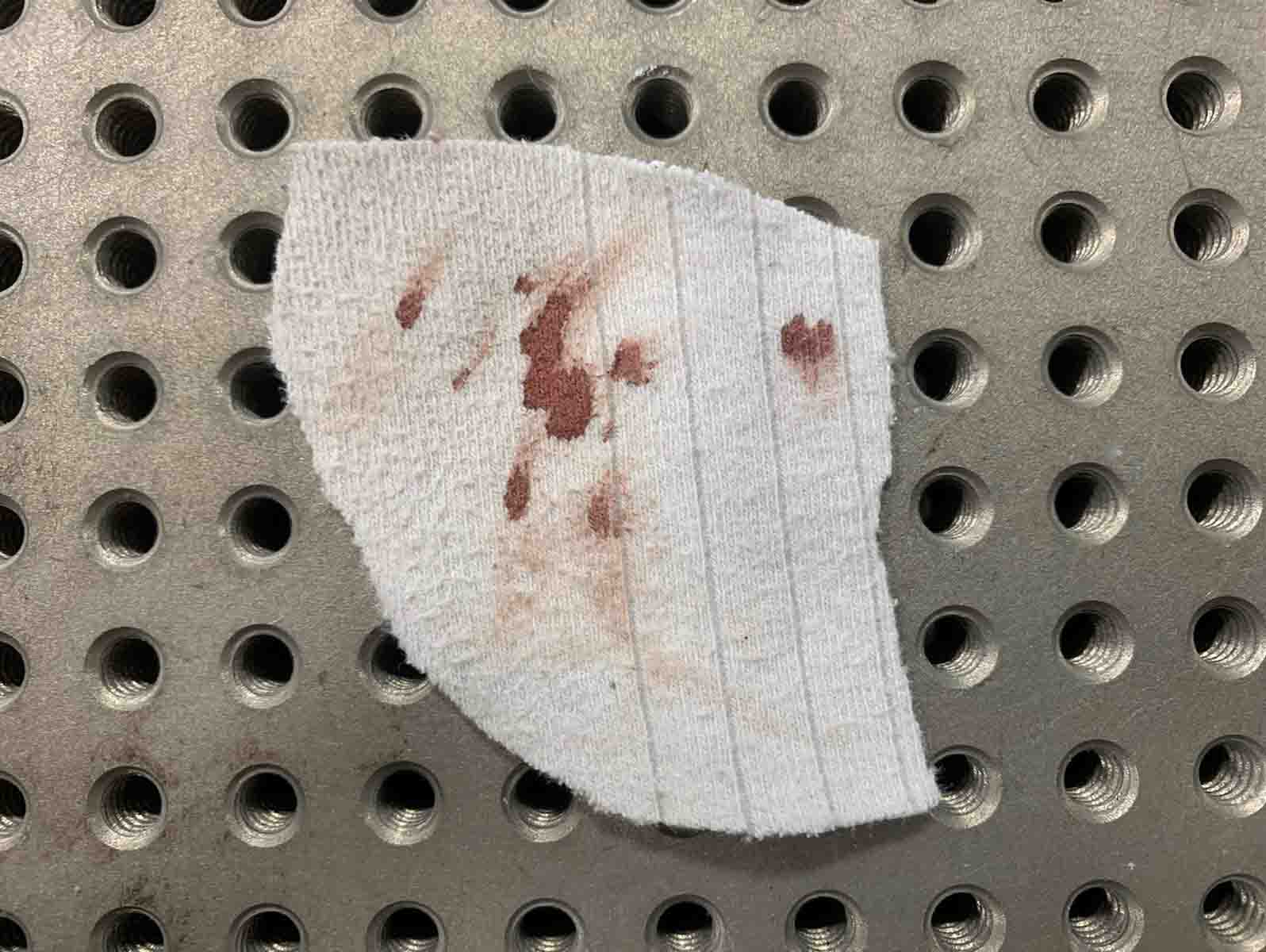
3D CT Scan
Here is what the CT scan data looked like by default on a sample cut from a sock. There is nothing visually present other than material fibers.

HYPOTHESIS: Iron is dense
Reviewing the 2D cross-sections we found stark contrasts between areas with and without blood. The hypothesis here is not that there is a concentration of material but that our CT scanner was able to pick up differences in density between the cloth and the iron in the blood.
Where there are extremely bright white specks are concentrations of iron & blood absorbed into the fibers.
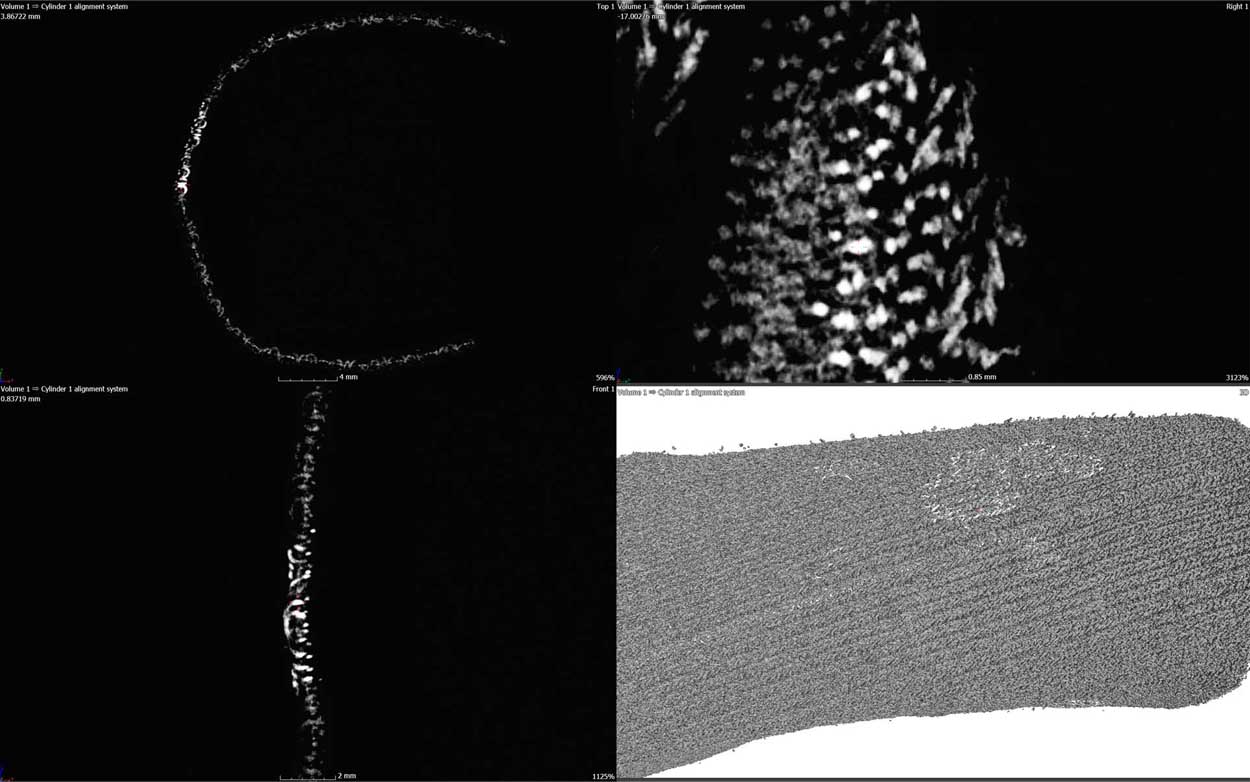
Blood Pattern
Here you can visualize where the matching extracted pattern. For the sake of achieving better resolution we wrapped the material into a cylinder to get closer imaging.
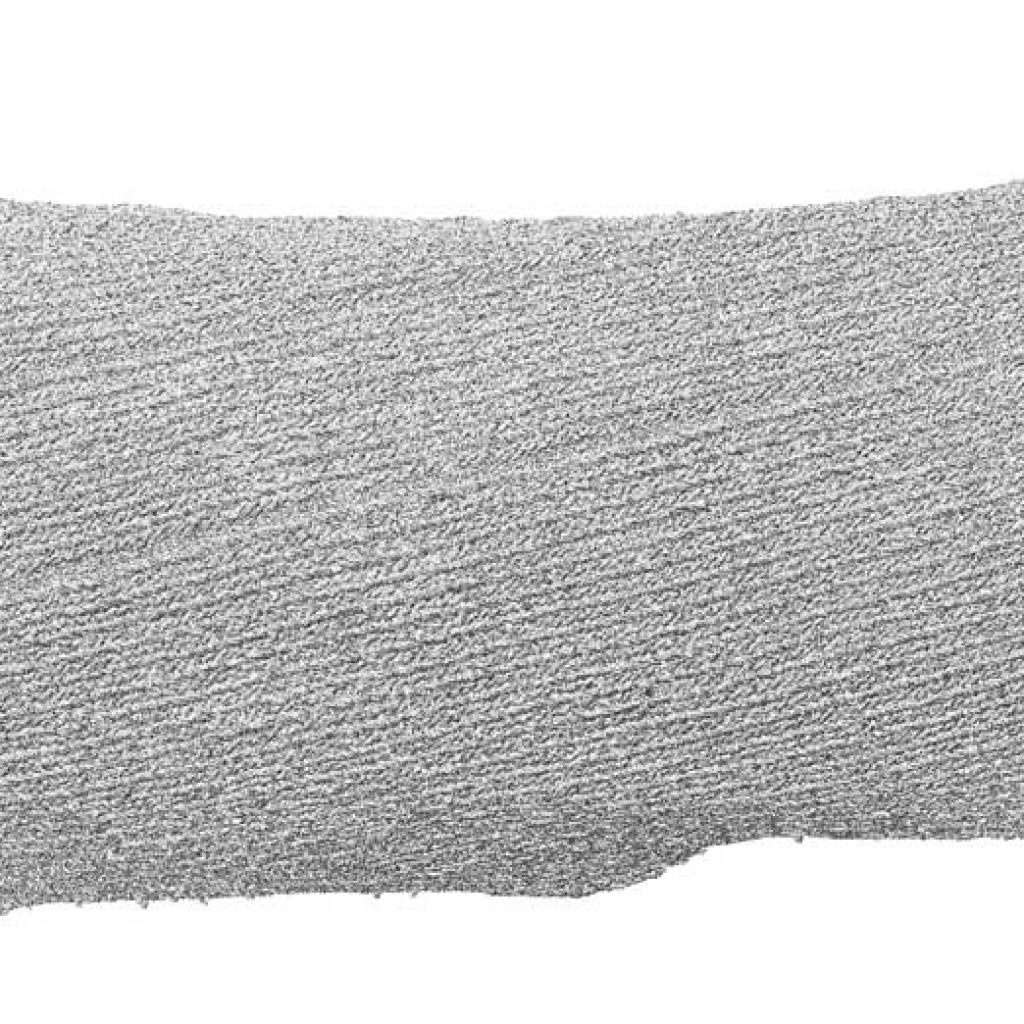
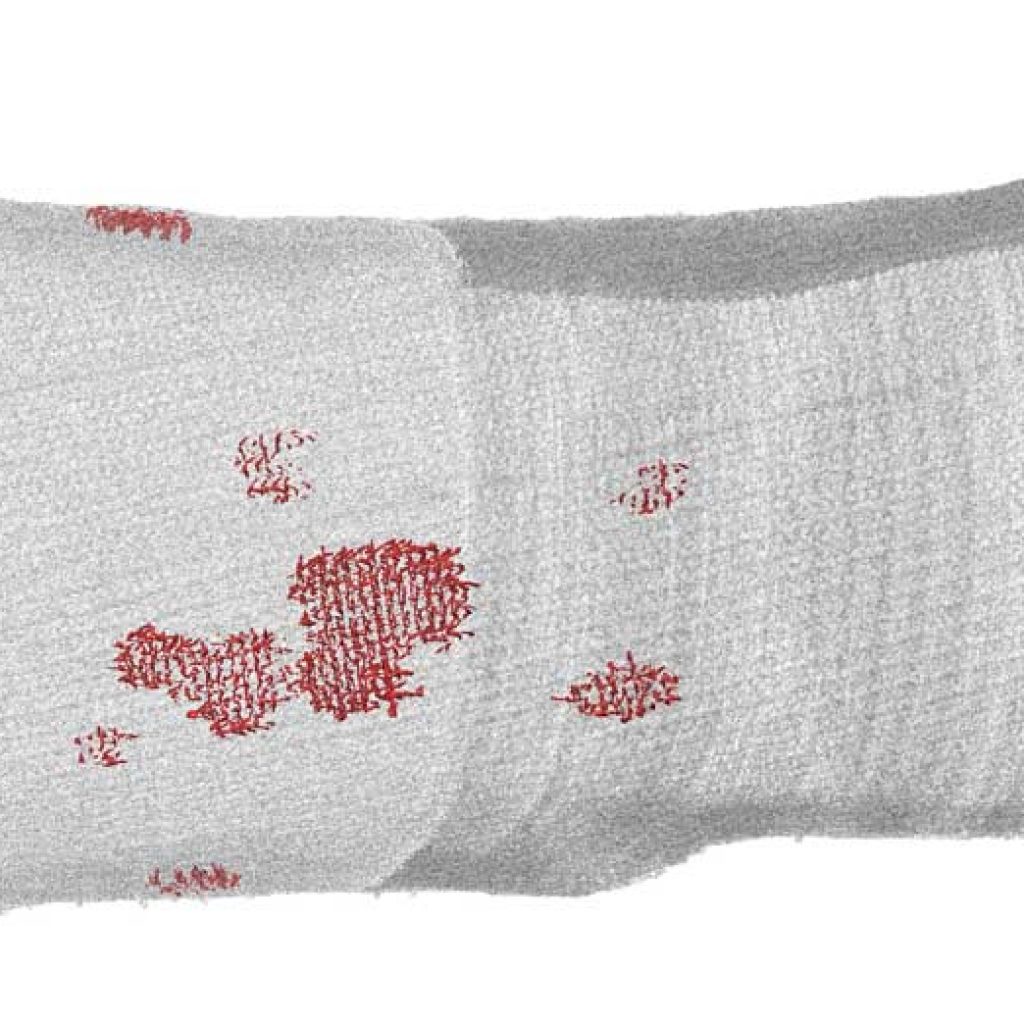
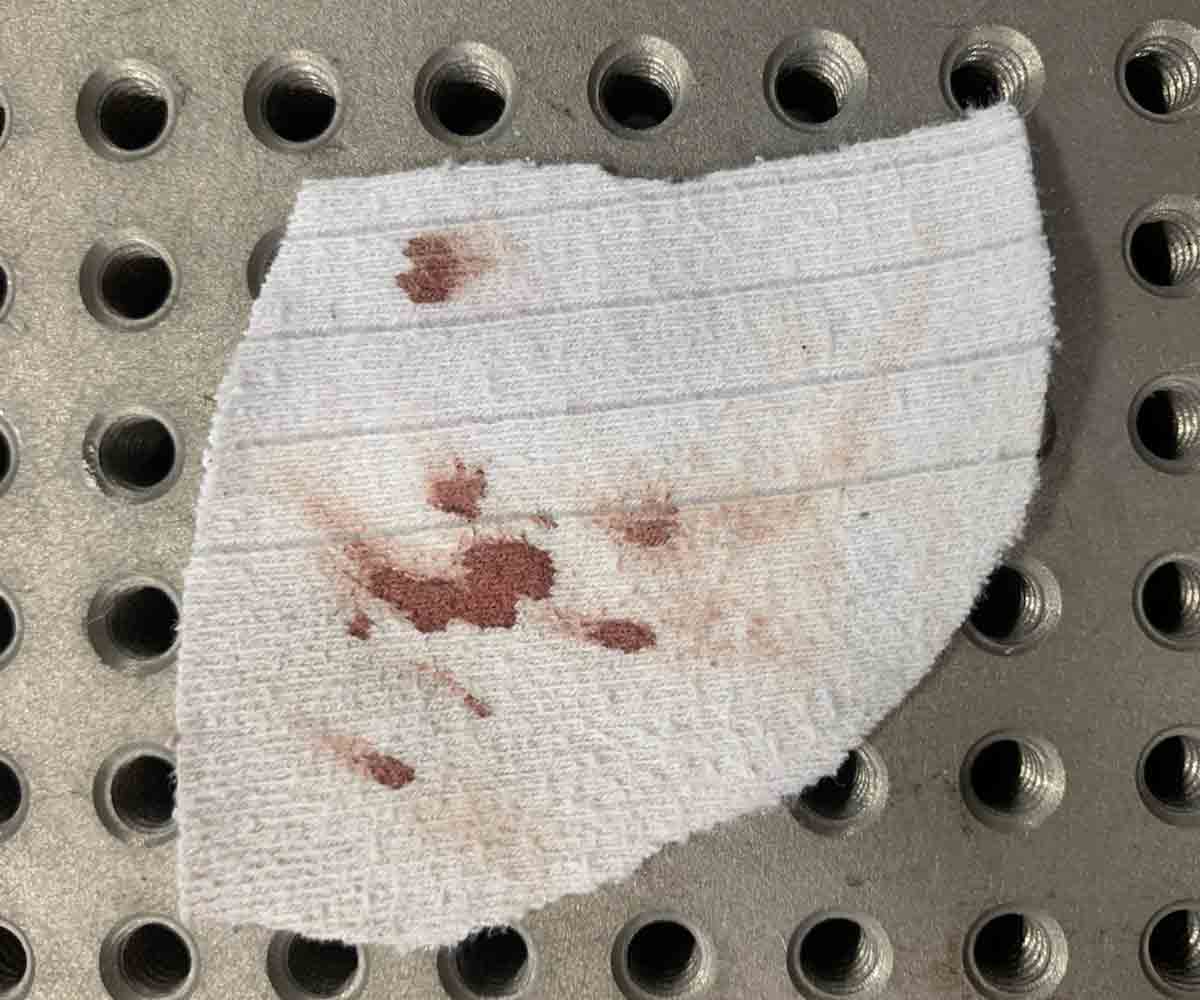
Close up view of fibers
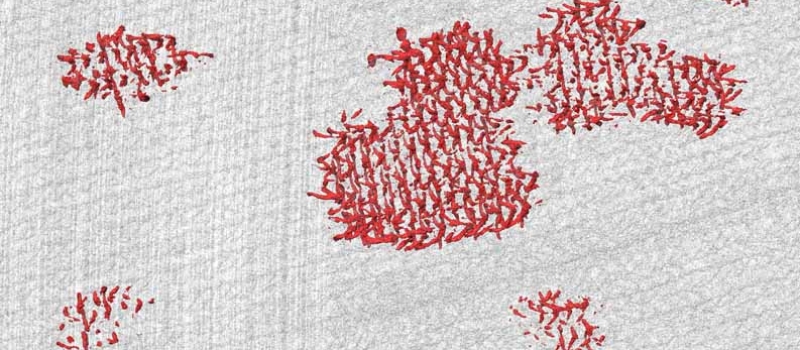
Bleaching Process
We found some bleach in our cabinet and cleaned the sample.
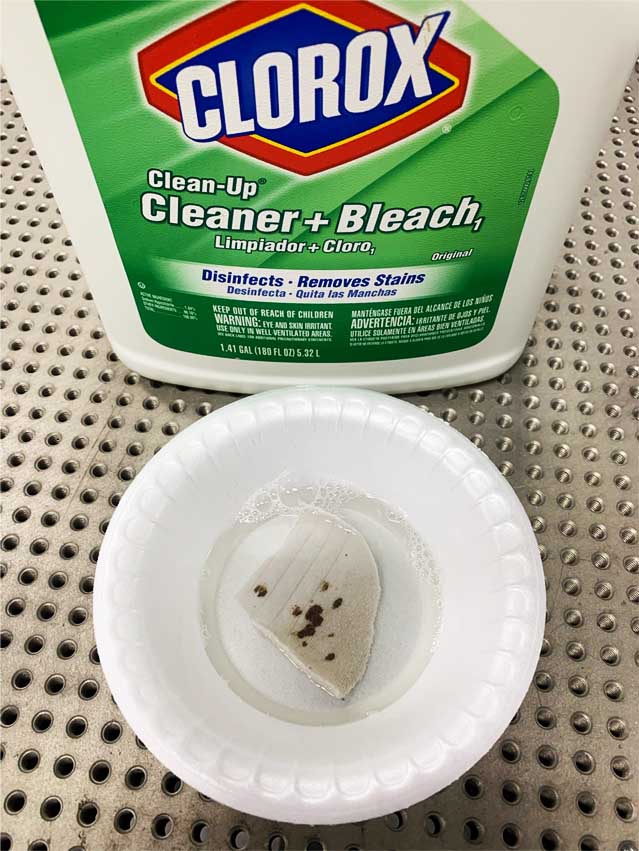
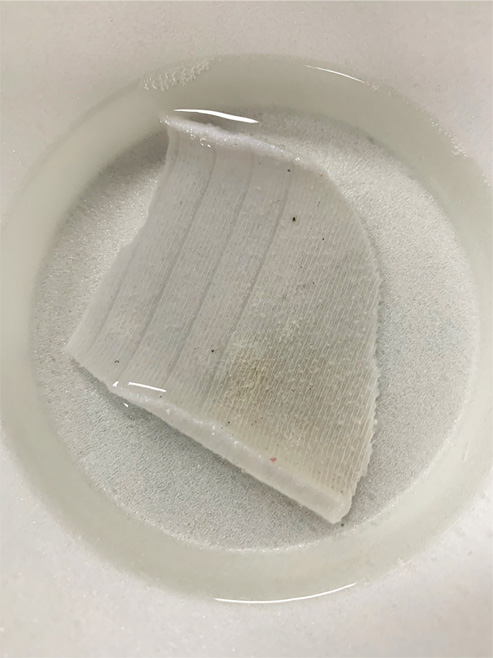
Reviewing Post-Bleach 2D Cross Sections
At first we were under the impression that the post-bleach sample rendered no useful information. There is not a stark contrast between the different locations like there was before.
Upon further analysis we realized that the bleach had dispersed the blood across the material. Rather than specific locations that matched a known pattern, iron was being seen throughout the sample.
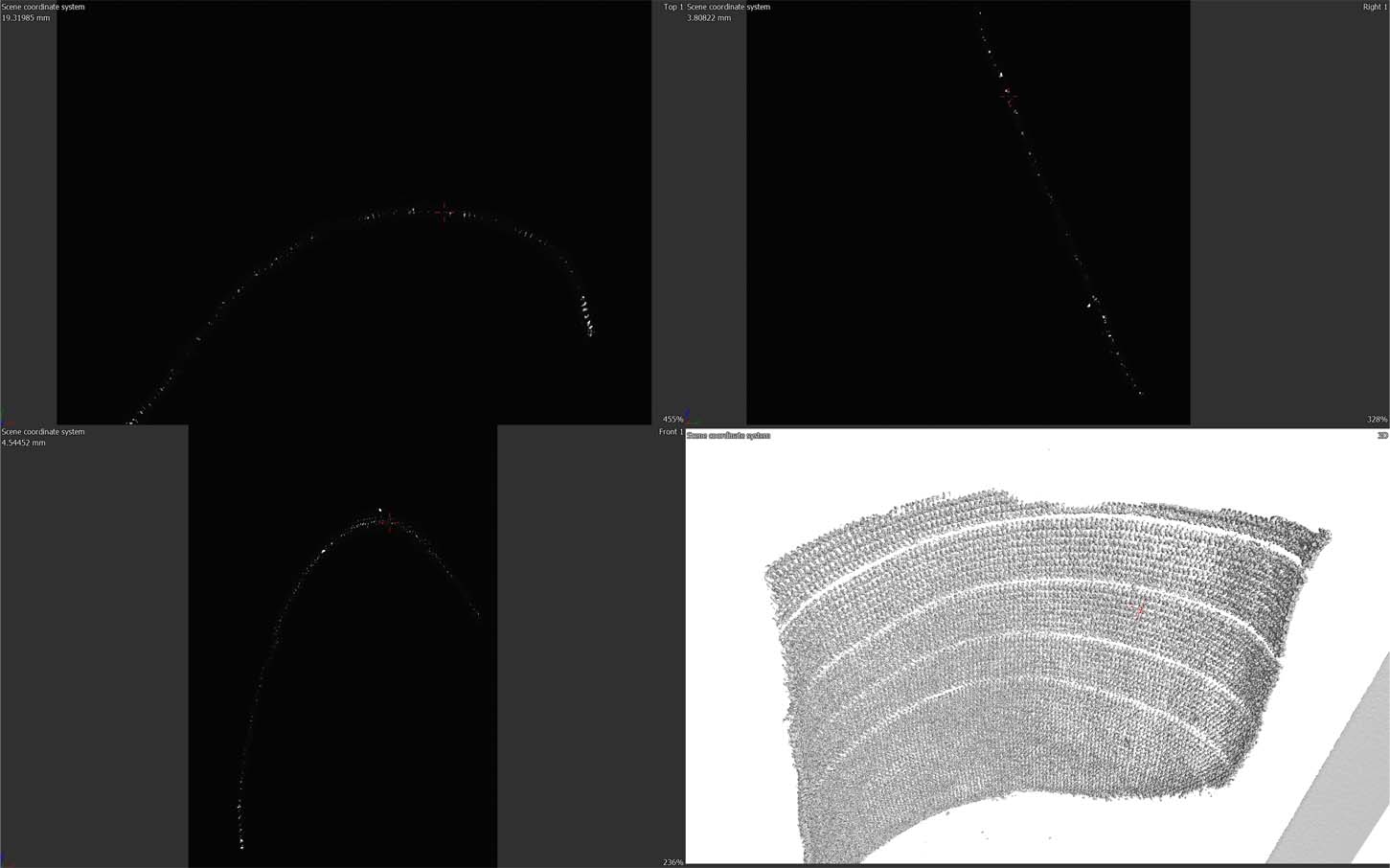
CONCLUSION
Our client was impressed with this data. Specifically, the 2D cross sectional views offered novel insights into dispersion of blood into materials. Proving that we can, we have now been invited to participate in a larger study analyzing all of this same information across several types of materials and methods for applying the blood to those materials.





